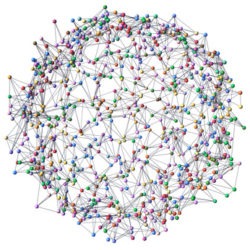Last week I provided a short quiz with potential answers to the question: What is the Industrial Internet of Things? The correct answer was all of the above, but the fourth choice deserves a more detailed explanation. Here it is:
Where industrial automation has been headed all along
In the beginning there were manual adjustments with a parameter read by a person.
Let there be air – specifically at 3 to 15 psig. Pneumatic sensors and actuators controlled by pneumatic controllers. Still just one parameter per tube though. I remember tubing bundles for instrumentation; in fact, I once worked with a machine that made them: Long, Long Ago in the Land of Cleve
I sing the control electric – 4 – 20 mA. Tubing gave way to wires – two wires using 4 – 20 mA for that, yes, still just one parameter.
Twenty five years ago, wires gave way to, ah, wires. But this time the wires used RS485 at the physical layer and PROFIBUS as the protocol. Digital communications carried the measured parameter and many more! Many parameters for configuration and diagnostics. RS485 is not Ethernet though. Ethernet had been invented by then, but it bears little resemblance to what we call Ethernet today. Coax cable and network collisions precluded it from use for industrial automation IO.
Let there be PROFINET and there was PROFINET. With Ethernet as the physical layer and collisions no longer part of Ethernet (thanks to Ethernet switches), Internet connectivity and IO connectivity could now be realized on the same infrastructure. Here we are at the Industrial Internet of Things, but the journey continues.
–Carl Henning
